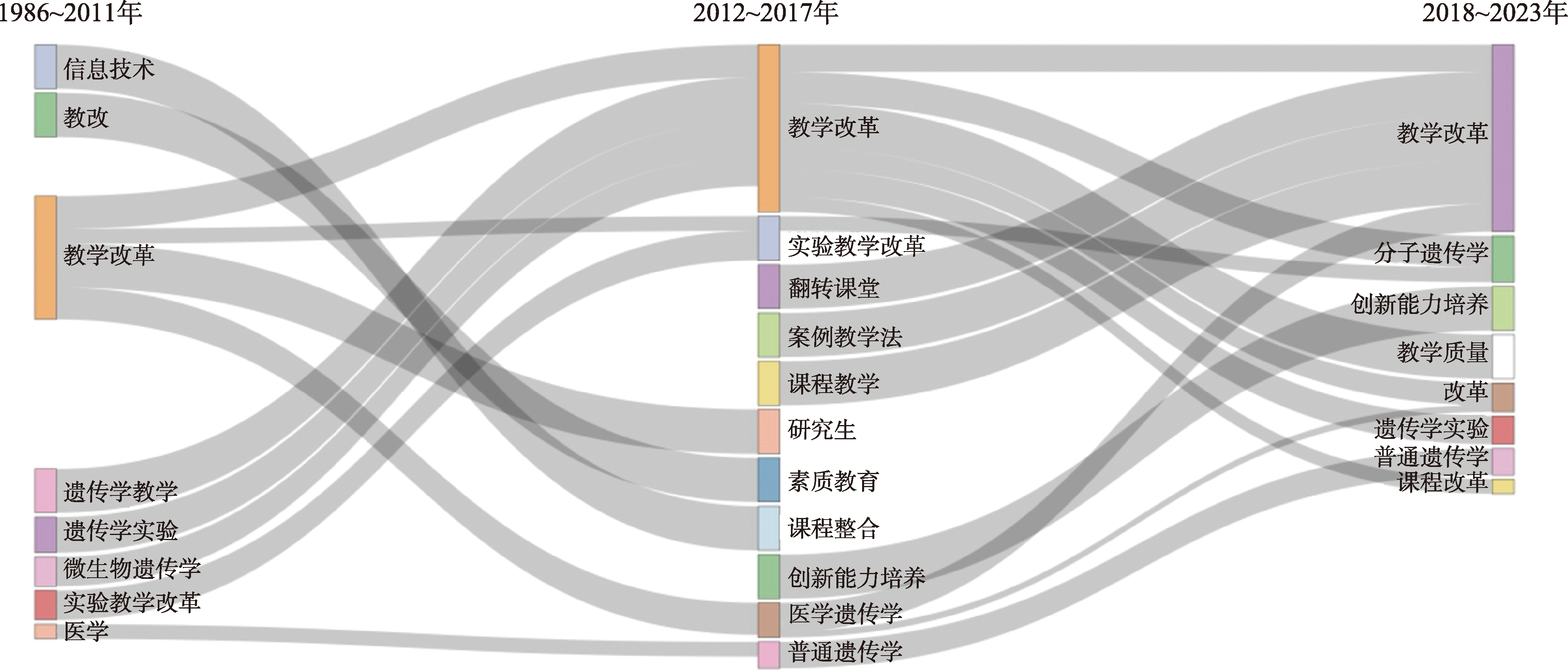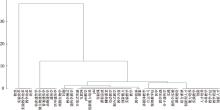| [1] |
Shi CH, Wu JG, Ma QL, Xiao JF, Hong CX. Improvement and optimization for “Genetics” course teaching. Hereditas(Beijing), 2005, 27(6): 980-983.
|
|
石春海, 吴建国, 马秋兰, 肖建富, 洪彩霞. 《遗传学》课程的建设与优化. 遗传, 2005, 27(6): 980-983.
|
| [2] |
Deng J, Wang L, Liu F. A review of clinical application and ethical research on medical genetic testing. Chin Med Ethics, 2024, 37(2): 145-151.
|
|
邓静, 王玲, 刘帆. 医学遗传学检测临床应用及伦理研究综述. 中国医学伦理学, 2024, 37(2): 145-151.
|
| [3] |
Zhu H, Feng B, Li S. Exploration and thinking of teaching innovation of general genetics course in the context of new agricultural science. J Biol, 2023, 40(6): 119-122.
|
|
朱虹, 冯波, 李帅. 新农科背景下普通遗传学课程教学创新探索与思考. 生物学杂志, 2023, 40(6): 119-122.
|
| [4] |
王书畅. 试析遗传学原理在海洋环境保护中的应用. 科技资讯, 2017, 15(28): 97-97+99.
|
| [5] |
Hu G. Reform and practice of genetics teaching. J Anhui Agric Sci, 2007, 35(28): 9108-9110.
|
|
胡甘. 遗传学教学改革与实践. 安徽农业科学, 2007, 35(28): 9108-9110.
|
| [6] |
Guo Y, Wang NN, Zhu DL, Yang TL. Reform and innovation of genetics basic experimental teaching in universities. J Biol, 2022, 39(6): 114-116.
|
|
郭燕, 王乃宁, 朱东丽, 杨铁林. 高校遗传学基础实验教学的改革与创新. 生物学杂志, 2022, 39(6): 114-116.
|
| [7] |
Yang RS. Teaching students according to their aptitudes and aspirations:building first-class undergraduate education and cultivating high-quality talents with both morality and ability. J Univ Sci Technol Beijing(Soc Sci Ed), 2023, 39(2): 127-132.
|
|
杨仁树. 因材施教应才培养打造一流本科教育培养德才兼备的高素质人才. 北京科技大学学报(社会科学版), 2023, 39(2): 127-132.
|
| [8] |
Wang JX, Zhu ZW, Li MG. The connotation, significance and implementing requirements of blended learning. Higher Archit Educ, 2018, 27(4): 7-12.
|
|
王金旭, 朱正伟, 李茂国. 混合式教学模式: 内涵、意义与实施要求. 高等建筑教育, 2018, 27(4): 7-12.
|
| [9] |
杜翔云, 钟秉林, Kolmos A. 以问题为基础的学习理念及其启示. 中国高等教育, 2008, (2): 20-24.
|
| [10] |
Guo JP. Flipped classroom teaching model: variation and Integration. China Higher Educ Res, 2019, (6): 8-14.
|
|
郭建鹏. 翻转课堂教学模式:变式与统一. 中国高教研究, 2019, (6): 8-14.
|
| [11] |
Zhao RY, Xu LM. The knowledge map of the evolution and research frontiers of the bibliometrics. J Lib Sci China, 2010, 36(5): 60-68.
|
|
赵蓉英, 许丽敏. 文献计量学发展演进与研究前沿的知识图谱探析. 中国图书馆学报, 2010, 36(5): 60-68.
|
| [12] |
Cai WB, Liu M. Bibliometric analysis of the disciplinary construction of pedagogy research. Higher Edu Dev Eval, 2013, 29(4): 19-29.
|
|
蔡文伯, 刘曼. 教育学学科建设研究文献计量分析. 高教发展与评估, 2013, 29(4): 19-29.
|
| [13] |
高俊宽. 文献计量学方法在科学评价中的应用探讨. 图书情报知识, 2005, (2): 14-17.
|
| [14] |
Chen Y, Chen CM, Liu ZY, Hu ZG, Wang XW. The methodology function of cite space mapping knowledge domains. Studies in Science of Science, 2015, 33(2): 242-253.
|
|
陈悦, 陈超美, 刘则渊, 胡志刚, 王贤文. CiteSpace知识图谱的方法论功能. 科学学研究, 2015, 33(2): 242-253.
|
| [15] |
van Eck NJ, Waltman L. Software survey: VOSviewer, a computer program for bibliometric mapping. Scientometrics, 2010, 84(2): 523-538.
|
| [16] |
Liu QY, Ye Y. A study on mining bibliographic records by designed software SATI: case study on library and information science. J Inf Res Manage, 2012, 2(1): 50-58.
|
|
刘启元, 叶鹰. 文献题录信息挖掘技术方法及其软件SATI的实现——以中外图书情报学为例. 信息资源管理学报, 2012, 2(1): 50-58.
|
| [17] |
Li H, Pan YG, Wang L. Bibliometrix: a new bibliometrics analysis software. J Acad Lib Inf Sci, 2018, 36(4): 93-104.
|
|
李昊, 潘宇光, 王磊. Bibliometrix:一款新的基于R语言的文献计量软件介绍与评价. 大学图书情报学刊, 2018, 36(4): 93-104.
|
| [18] |
Zhong WJ. Evaluation about the core authors based on Price law and comprehensive index method—take Journal of library development as an example. Sci Technol Manage Res, 2012, 32(2): 57-60.
|
|
钟文娟. 基于普赖斯定律与综合指数法的核心作者测评——以《图书馆建设》为例. 科技管理研究, 2012, 32(2): 57-60.
|
 ), Dajin Zhang, Dongli Zhu, Shanshan Dong, Tielin Yang(
), Dajin Zhang, Dongli Zhu, Shanshan Dong, Tielin Yang( )
)



















